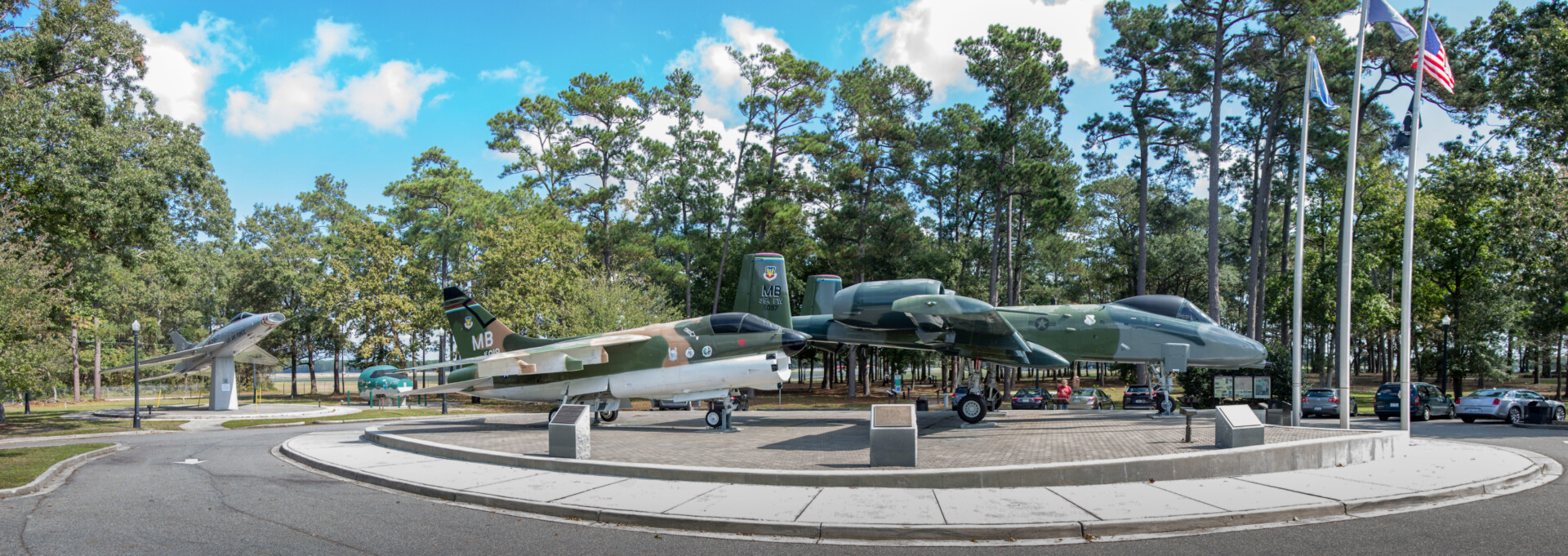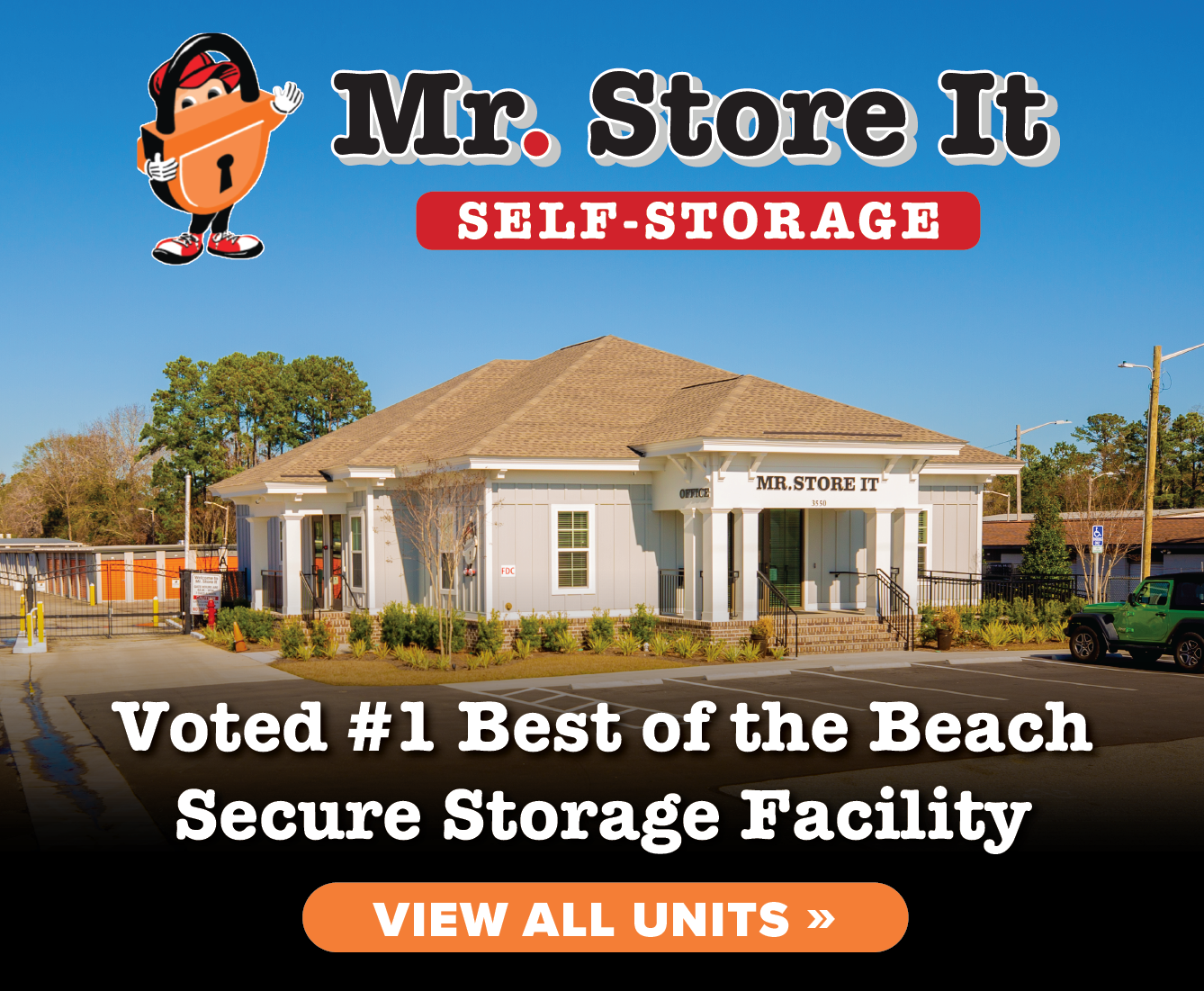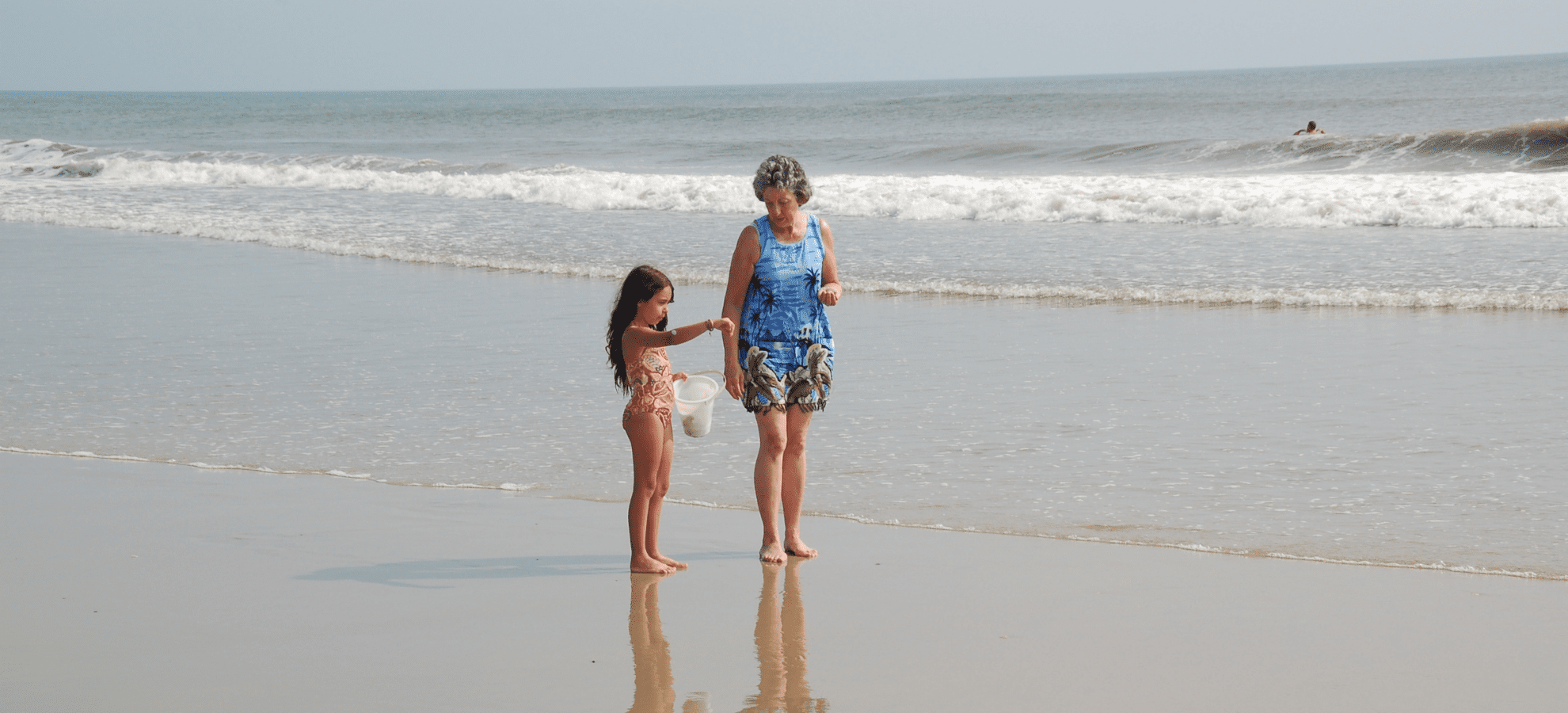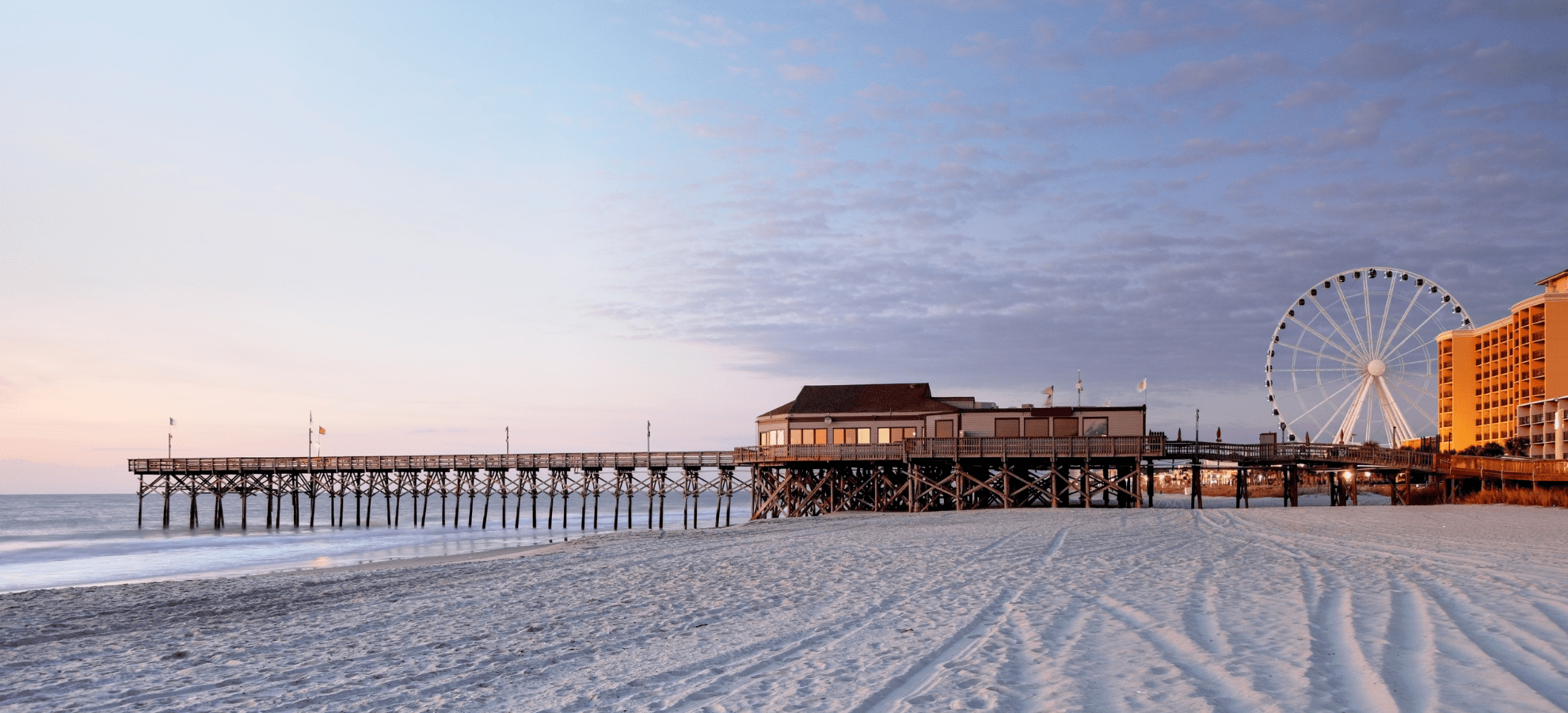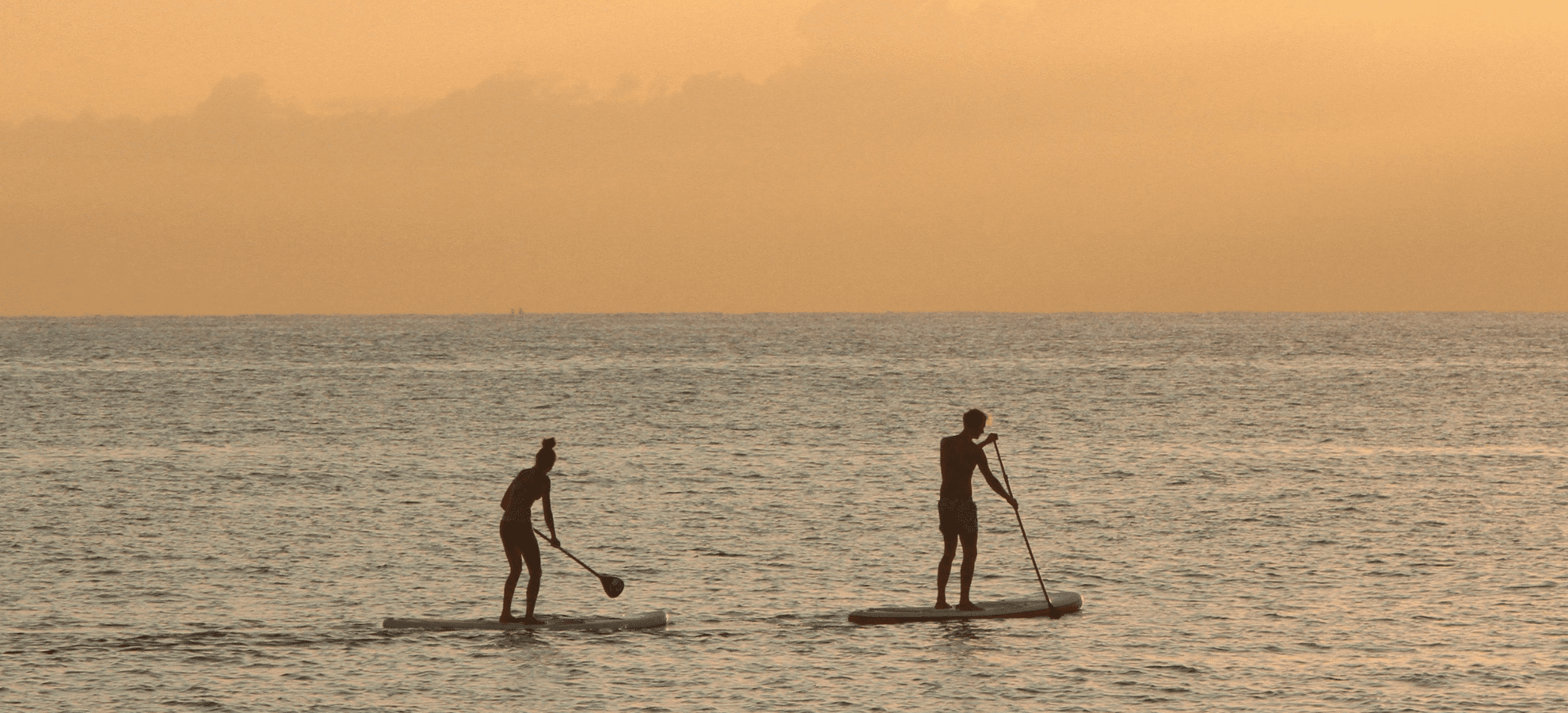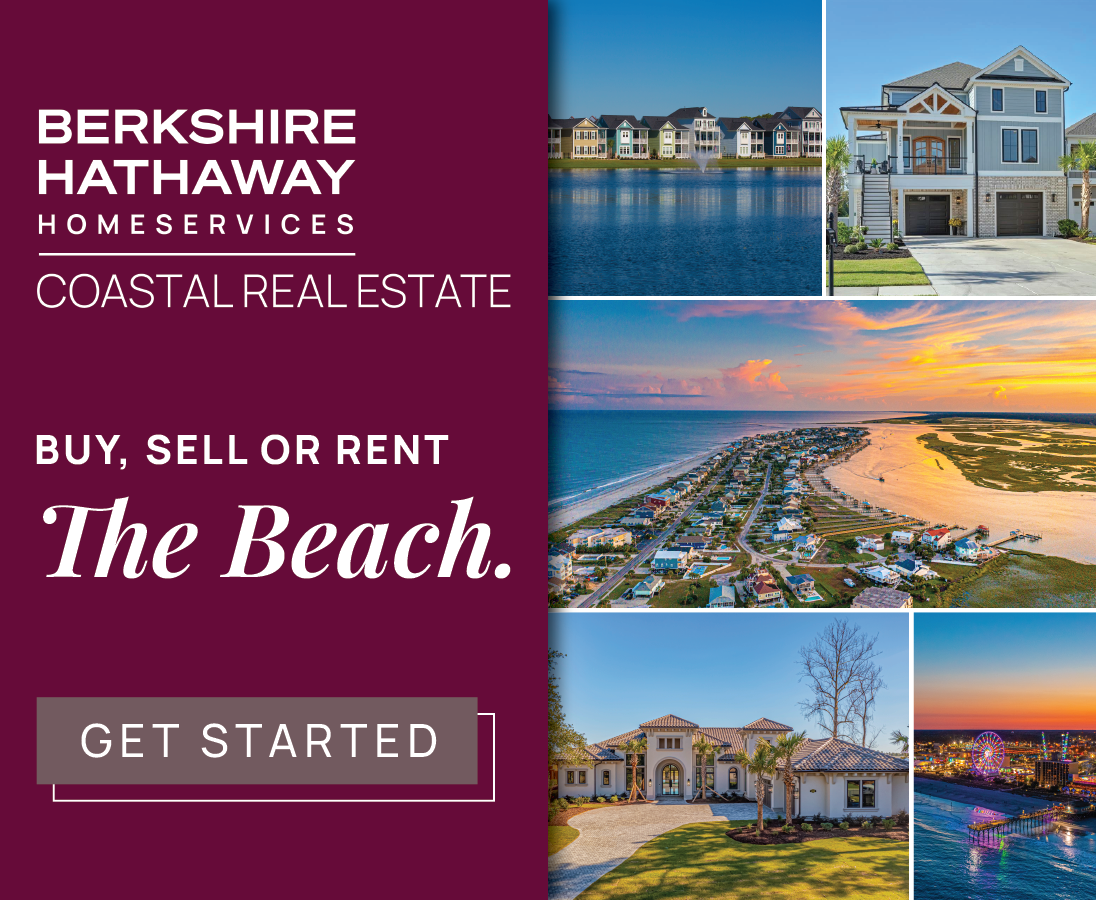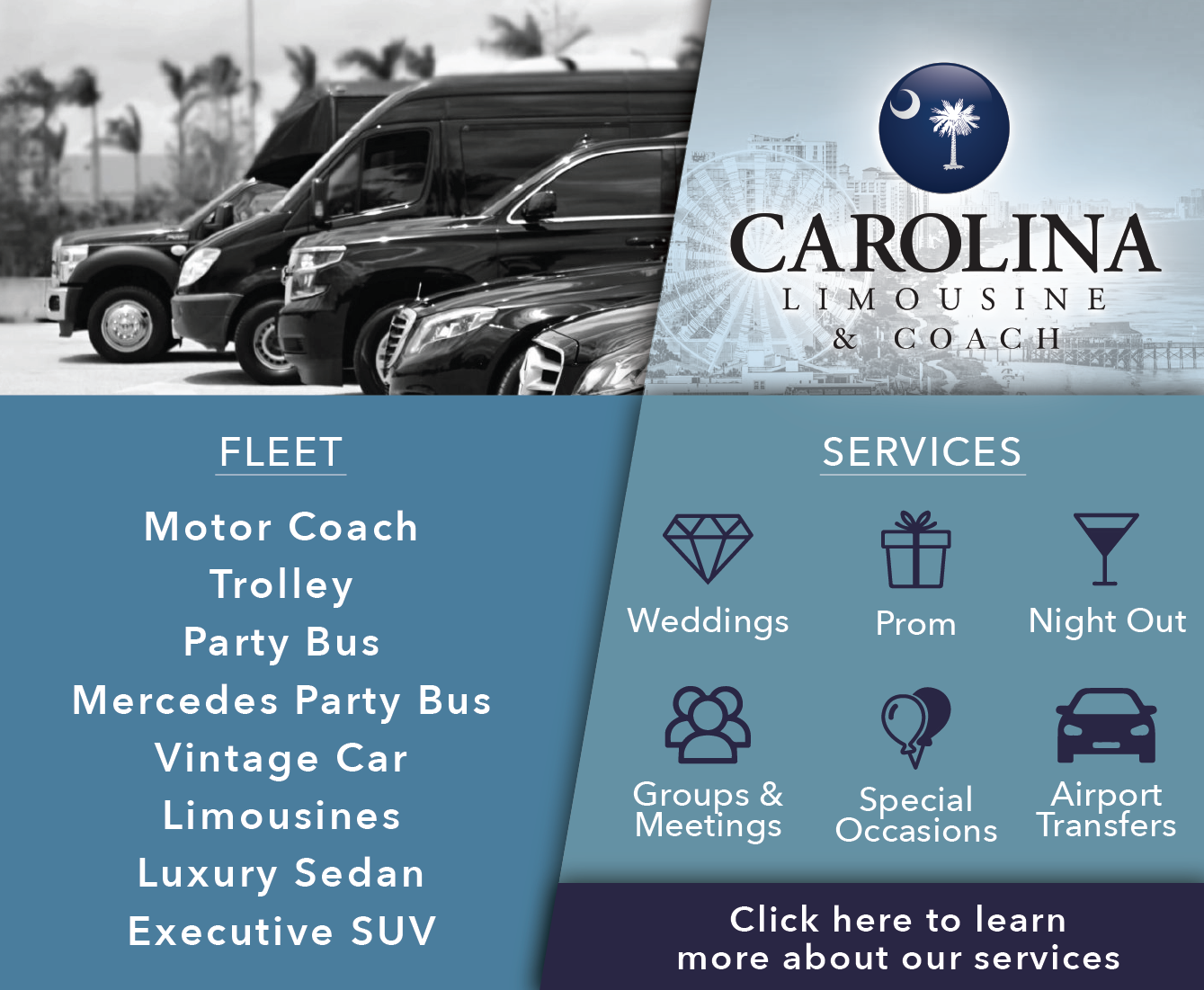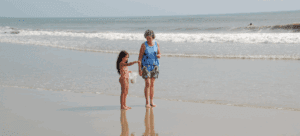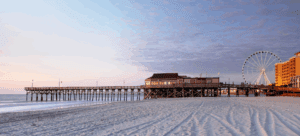A Perspective and Historical Account
by Lynn Mueller
On October 16, 1939, the Myrtle Beach Town Council concluded that the community was in dire need of a municipal airport. Given this conclusion, the town purchased one hundred thirty-five acres of adjoining property. Shortly thereafter, the airport was named the Harrelson Municipal Airport. It was named after Mayor W. L. Harrelson, a strong supporter of this project.
During World War II, the Army Corps took over Harrelson Municipal Airport. The United States Department of War formally took charge of the airport in 1942 and named it the Myrtle Beach General Bombing and Gunnery Range. Finally, in 1943, the 5,000-acre base became known as the Myrtle Beach Army Air Field.
After the war, the site was deactivated and returned to the city with 114 buildings in place. The Myrtle Beach Municipal Airport was reborn in November of 1947.
The airport was donated to the military once again, this time to the Air Force, in 1954. It continued under their direction until 1991, when it was announced that the Myrtle Beach Air Force Base would permanently close. The base closed two years later, on March 31, 1993.
It was expected that the closing of the base would necessitate the loss of more than 5,000 jobs, leave 1,500 homes vacant and for sale, reduce student enrollment by 15%, and raise unemployment by 20%, and generate a loss of over $91 million in taxes and general revenue.

By August 1995, the Myrtle Beach Air Force Base Redevelopment Authority was created with retired Air Force Colonel Buddy Styers at its head. This lead to the creation of the area we now know as the Market Common, which is comprised of 110 acres.
In the early 1980s, the concept of New Urbanism arose. New Urbanism is a planning and development approach based upon an understanding of how cities have been built over the last several centuries. This approach replicated walkable blocks and streets, housing, and shopping near and accessible to open, public spaces. This approach was a reaction to the sprawling, single-use, low density pattern of post World War II development. The flight from urban America to suburbia had created a post urban society which disconnected homes from a traditional urban setting, where shopping and community connectivity had been the norm.
The net result of suburbia was the creation of a situation with negative economic and environmental impacts. The evolution of New Urbanism was principally created as a reaction to the flight to suburbia.
While Market Common as we find it today is unique to all of us, it is but one of literally thousands of similar types of developments across the United States and nations including The Netherlands, Sweden, and the United Kingdom.
The basic principal driving the New Urbanism approach, which sometimes is called Traditional Neighborhood Development or TND, is that public and private spaces are of equal importance. Given this concept, one can create a balanced community which serves a wide range of home and business opportunities.
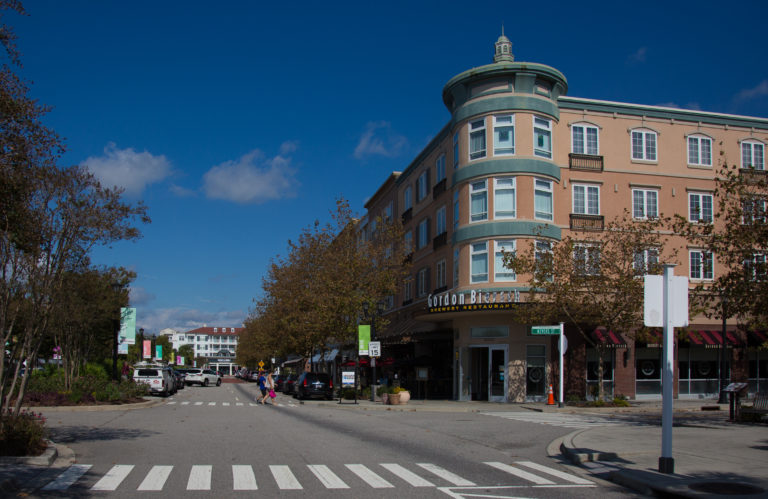
Colonel Buddy Styers, as head of the Redevelopment Authority, worked close- ly with the City of Myrtle Beach. The city had commissioned the development of an urban village plan that the Authority did not have access to, but through his efforts the city cooperated and an agreement was reached to integrate this plan into the planning process of the Authority.
It was a commitment which included connecting what was to be developed with the history of the site. This led to the naming of all the streets in Market Common after those who were connected in some way to the Myrtle Beach Air Force Base. In addition, plaques were placed throughout Market Common with narratives relaying the history of both the Air Force Base, and the people who made memorable contributions in connection to it.
In addition to what might be characterized as Market Common’s downtown, residential neighborhoods surround the core shopping and living area.
The core commercial district is filled with unique shopping opportunities with many locally owned businesses and eateries. The SoHo section was designed to replicate past urban America with a first floor as a commercial shop/work place and the business owner living upstairs. This section is relatively unique in these types of developments, and a tremendous shopping experience for residents and visitors alike.
The mix of housing opportunities has stayed consistent over recent years. Sales trends tracking the sale of condominiums versus single family homes has continued to sustain each category. For example, in 2012, one-third of the properties purchased were condominiums and two- thirds were single family homes. This percentage stayed the same in 2013. By 2014, the ratio was one condo for every seven single family homes sold, and by 2016, this ratio was one condo for every five single family homes sold.
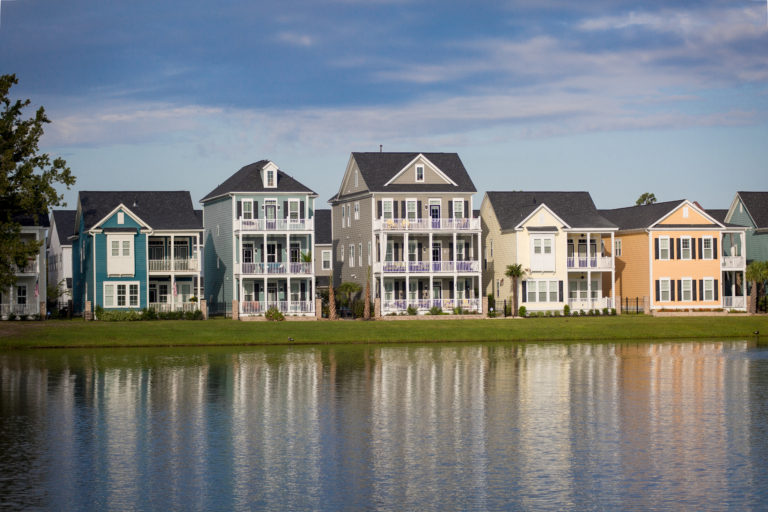
Some interesting historical development tidbits are:
Based on client design criteria, both the Barnes & Noble and P.F. Chang’s buildings required specific design com- mitments including the need for the Authority to build two large horses at the entrance to P.F. Chang’s.
The lakes, the parks, the playgrounds and other public spaces were designed for not only aesthetic purposes but to serve the community and visitors. The addition of Horry Georgetown Technical College campus and the recent addition of the International Culinary Institute have enhanced the nature of the entire development.
The development called for the installation of decorative street lamps throughout Market Common. The city wanted to put in standard street lights. The cost difference was $8. The solution was for the city to pay for the street lamps up to the amount of their standard cost and the Municipal Improvement District Act was implemented to pay the difference… problem solved!
As new homes continue to be built, more and more of our fellow citizens are discovering that Market Common pro- vides a distinctive opportunity unparalleled in our region.
Whether one lives in Surfside, Socastee or any of the other surrounding communities, the shopping and eateries at Market Common are a unique attraction. There’s plenty of opportunities for fun for the entire family in the Market Common— from regular baseball and soccer games at the ball fields, to seasonal farmers markets on Saturdays, to the wide array of festivals.
The Market Common is a phenomenal place to shop, work, play and of course, live. While other New Urbanism developments have occurred across the country, the totality of the design and layout of Market Common is inimitable.
For more on Market Common’s past visit our archives.






